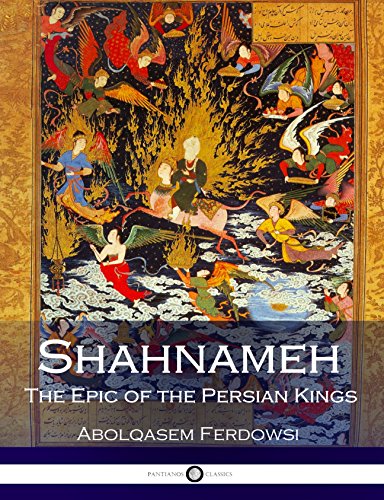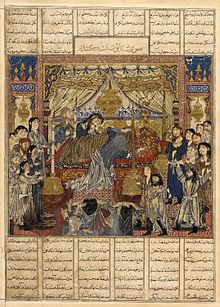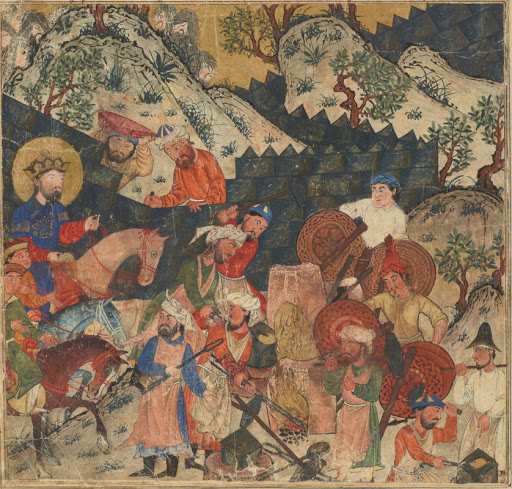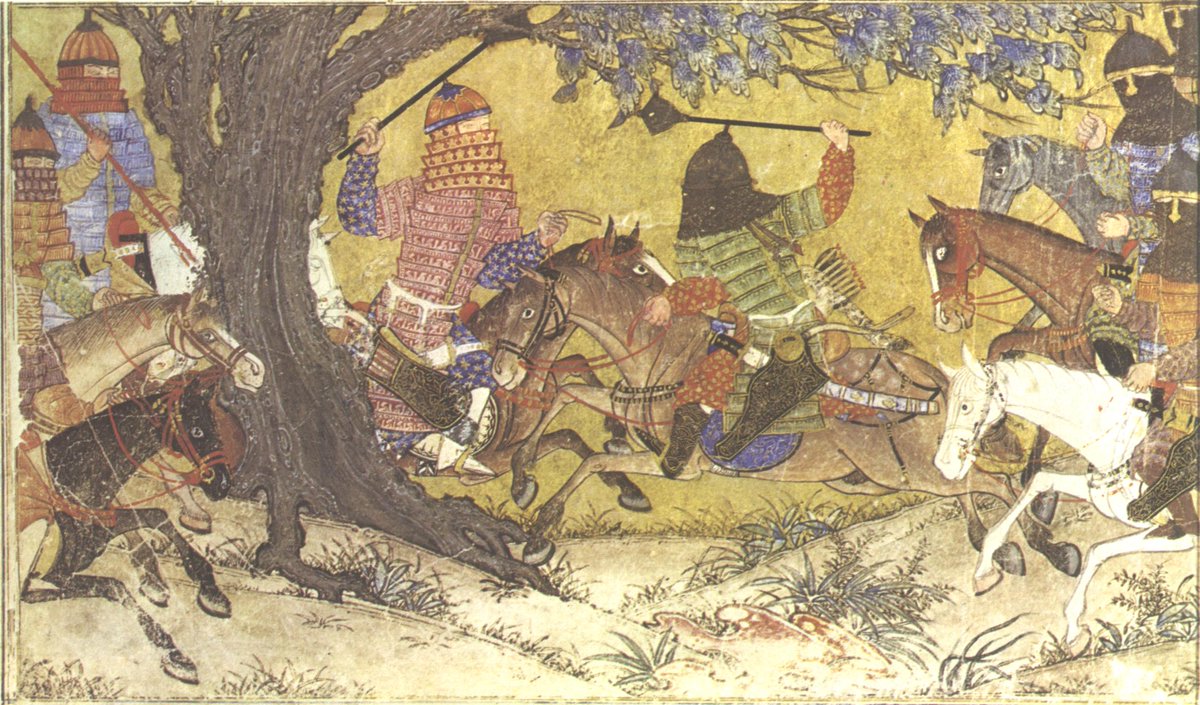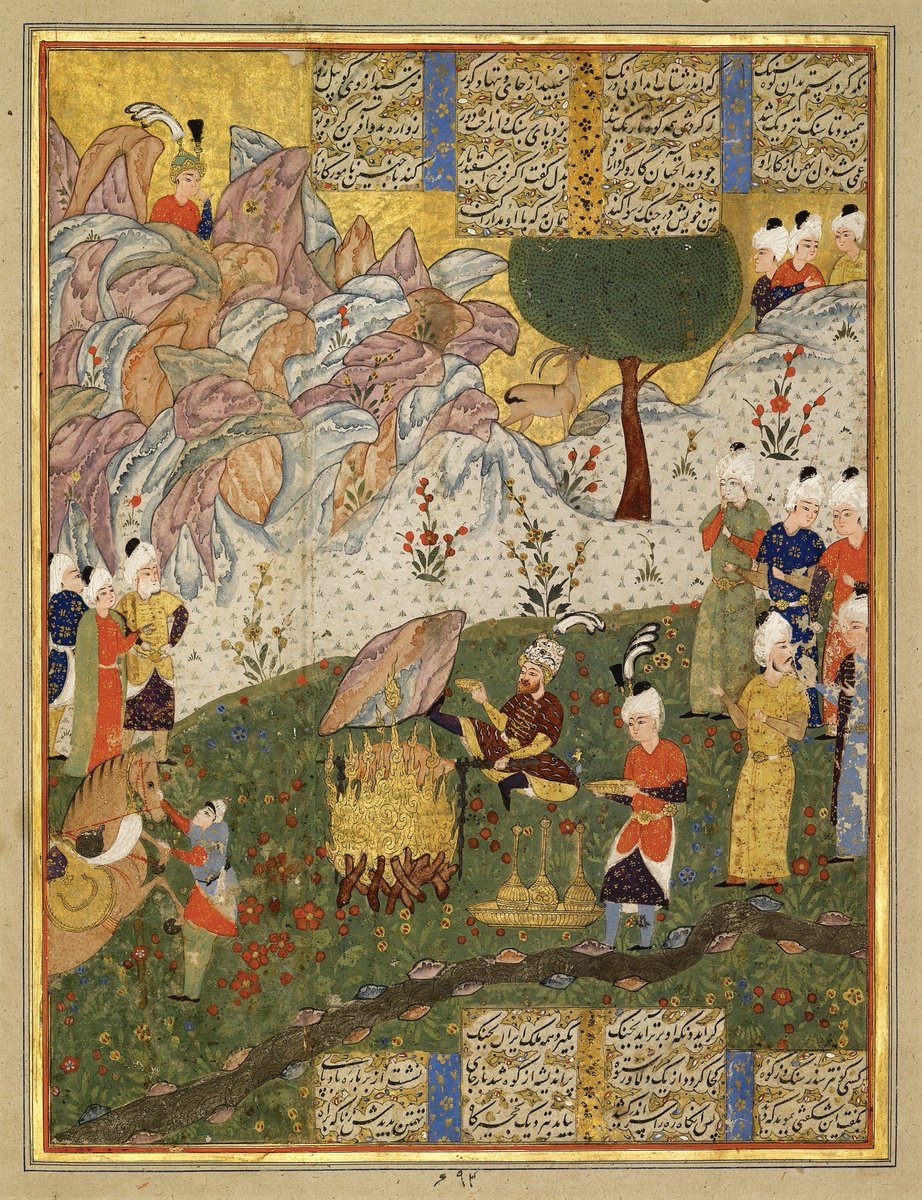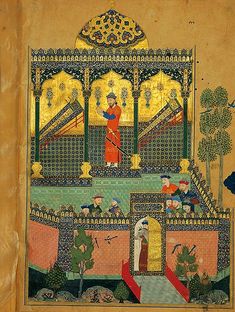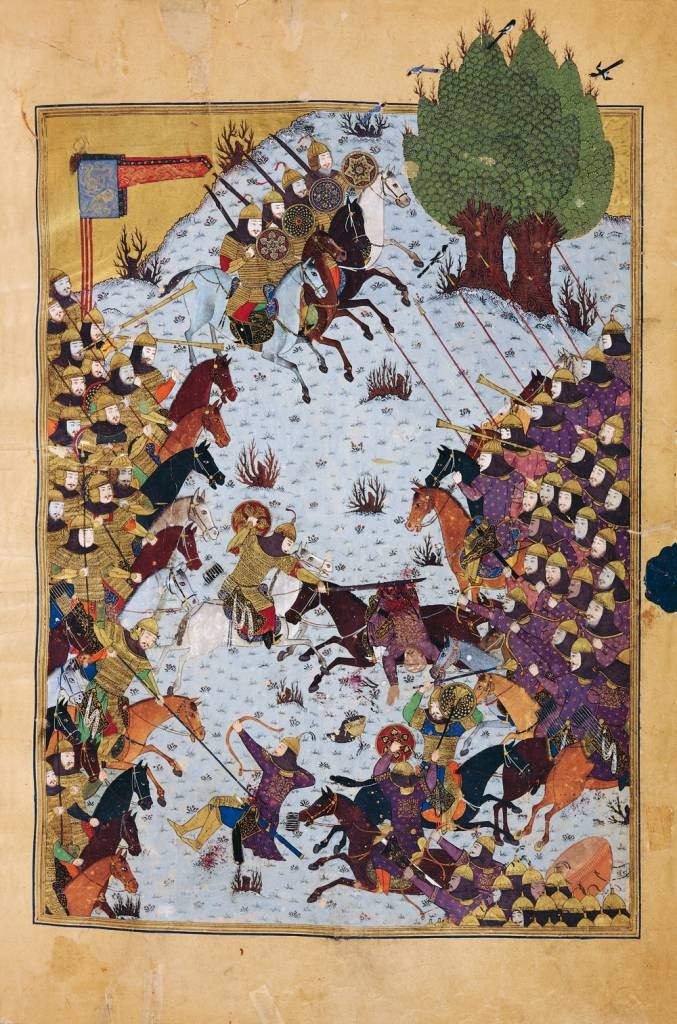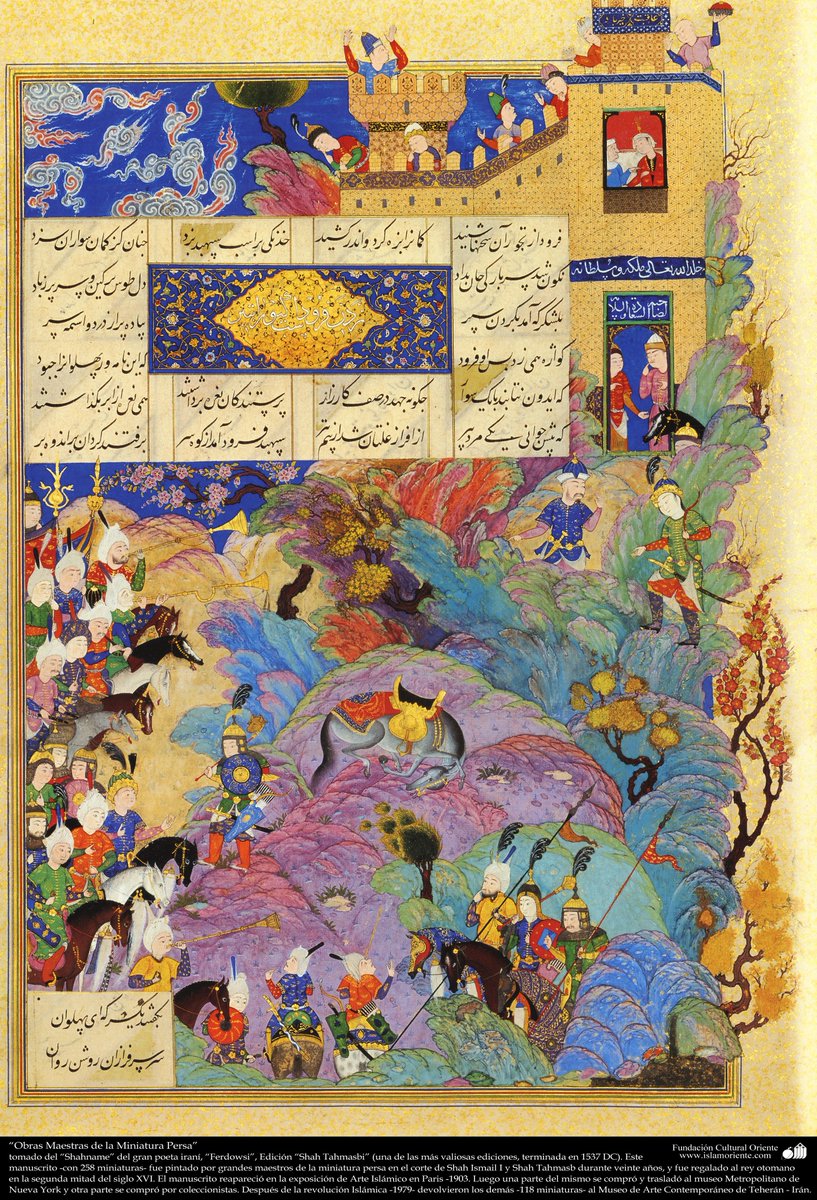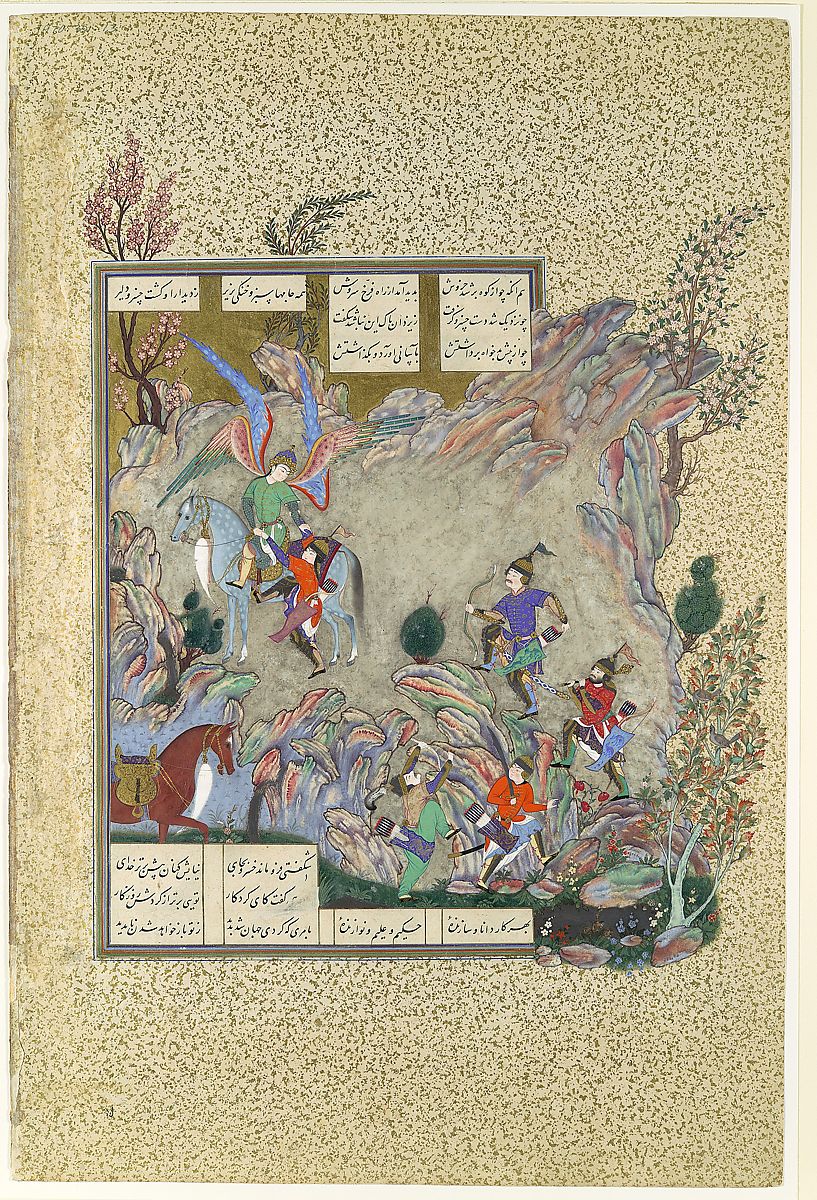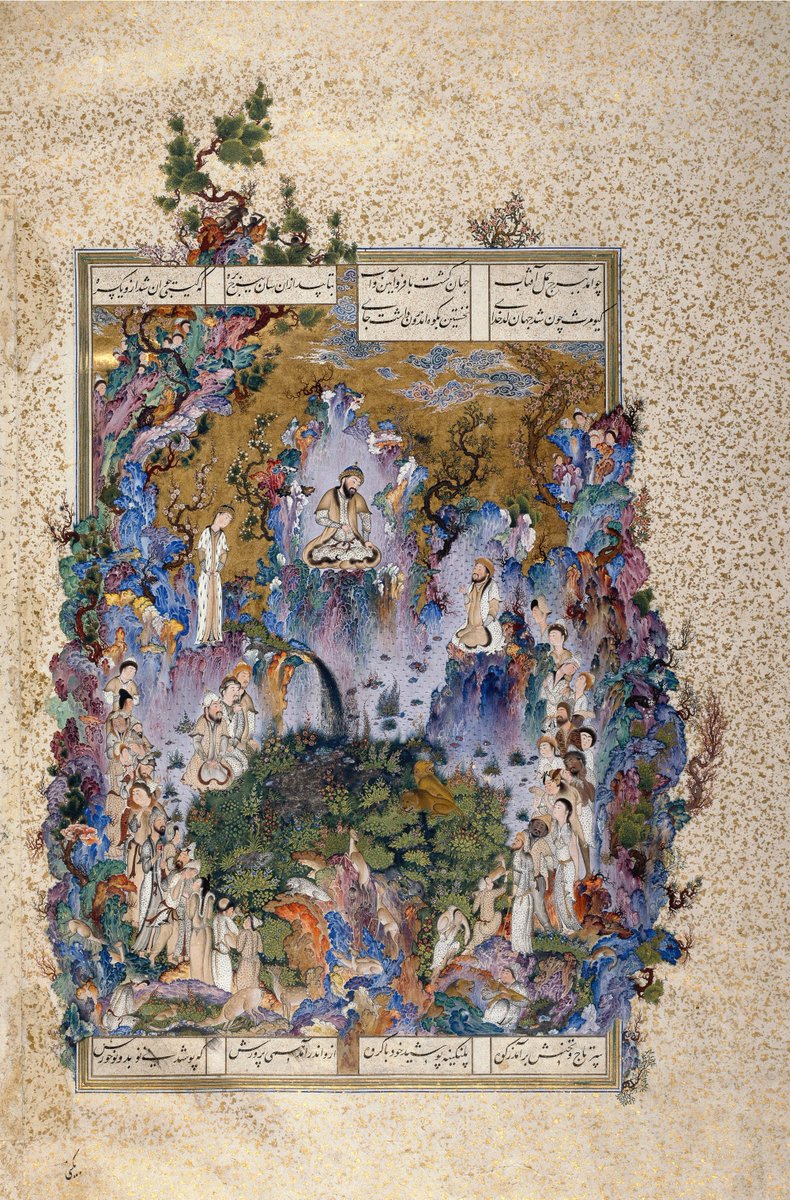2020 marks the 1000th anniversary of Ferdowsi& #39;s death, whom died at age 81 in 1020. Ferdowsi has not only endured for a thousand years but has also defined the very identity and language of Persianspeakers and the Persianate civilization.
God bless him.
God bless him.
When I was a kid my grandfather used to read for me the "Daastaan-e Rostam wa Sohrab" all the time. I remember how bitterly I used to cry when Sohrab died.
Shahnameh has played a key role in what and who I am. Therefore Ferdowsi deserves his own thread.
Shahnameh has played a key role in what and who I am. Therefore Ferdowsi deserves his own thread.
Ferdowsi literally means "belonging to Paradise." The word "ferdows" is an Arabic variation of the Persian word "pardis," from which the English "paradise" has derived. He was born near the Khorasani town of Tus (now Mashhad) in northeast modern Iran in 940 AD.
He came from an educated landlord dehqan family, but as he devoted his life to composing his masterpiece the Shahnameh (which literally means "The Book of Kings") he spent all his wealth, and died in poverty and poor health.
Shahnameh is a massive work: With about 50,000 rhyming couplets, it is the largest book of poetry ever composed by a single poet in the same style and field. It is a compendium of myths, legends, and historical events of the ancient Iran. The Shahnameh is one of the greatest...
epic works in world literature, similar to the Greek Iliad and the Odyssey and the Indian Mahabharata. However, unlike these works which revolve around a particular war or a hero, the Shahnameh& #39;s scope is quite vast, both in terms of geography (spanning from China to Yemen) and..
chronology (from the creation of the first human to the collapse of the Sassanid dynasty by the Islamic invasion of Iran in the seventh century.)
Ferdowsi is regarded as one of the greatest Persian poets of all time for one thing: because he helped revive the Persian language in the aftermath of the Arab invasion. On this regard, Ferdowsi, Rudaki and Daqiqi deserve a special status in the Persianate heritage.
All other Persian poets after him, from Omar Khayyam and Nizami through Attar, Mawlana, Sa´adi to Hafez and Jami, all of them stand on Ferdowsi& #39;s shoulder.
Now it is time to focus on three most important illustrated Shahnamehs:
-The Great Mongol Shahnameh from Tabriz.
- Baysanghori´s Shahnameh from Herat.
-Shah Tahmasp´s Shahnameh from Tabriz.
-The Great Mongol Shahnameh from Tabriz.
- Baysanghori´s Shahnameh from Herat.
-Shah Tahmasp´s Shahnameh from Tabriz.
Great Mongol Shahnameh
Ironically the best first illustrated Shahnameh was made by the same guys who had devastated Iran: the Mongols. Or better said, their Islamized Ilkhanid successors. This should not take us by surprise though after all miniatures originated in China...
Ironically the best first illustrated Shahnameh was made by the same guys who had devastated Iran: the Mongols. Or better said, their Islamized Ilkhanid successors. This should not take us by surprise though after all miniatures originated in China...
the Pax Mongolica united the Persianate and Chinese world leading to a surge economic growth, free movement of people and ideas and of course, new ways to understand art and culture.
The Mongol Shahnameh is the oldest surviving illustrated manuscript of the Shahnameh, probably dating to the 1330s. It is the largest early book in the tradition of the Persian miniature, in which it is the most magnificent manuscript of the fourteenth century.
It was produced in the context of the Ilkhanid court ruling Iran, about a century after their conquest. It remained in Iran until the early 20th century, when it was broken up in Europe by the dealer George Demotte. That is why its also known in the West as "Demotte´s Shahnameh".
Baysonghor´s Shahnameh
It is called Baysonghor after the great Timurid prince Baysonghor Mirza, Shah Rukh´s son. A very educated man he patronized countless cultural projects. One of them was this massive Shahnameh.
It is called Baysonghor after the great Timurid prince Baysonghor Mirza, Shah Rukh´s son. A very educated man he patronized countless cultural projects. One of them was this massive Shahnameh.
The work on this manuscript was started in Herat in 1426 and was completed in 1430. Written in Nastaʿlīq script, it has 346 pages and 21 miniatures of the Herat School and is one of the most important works in this school.
It is now in the museum of Golestan Palace, Iran, and regarded as a key masterpiece of the Persian miniature.
It is included in UNESCO& #39;s Memory of the World Register of cultural heritage items.
It is included in UNESCO& #39;s Memory of the World Register of cultural heritage items.
Shahnameh of Shah Tahmasp
This is my favorite illustrated Shanameh. Patronized by the Safavid kings Shah Ismail I and Shah Tahmasp. The manuscript contained 759 pages, 258 of which were miniatures. These miniatures were hand painted by the artists of the royal school of Tabriz.
This is my favorite illustrated Shanameh. Patronized by the Safavid kings Shah Ismail I and Shah Tahmasp. The manuscript contained 759 pages, 258 of which were miniatures. These miniatures were hand painted by the artists of the royal school of Tabriz.
Upon its completion, the Shahnameh was gifted to Ottoman Sultan Selim II in 1568. The text was written in Nastaʿlīq script of the highest quality.
The manuscript was broken up in the 1970s and pages are now in a number of different collections around the world.
The manuscript was broken up in the 1970s and pages are now in a number of different collections around the world.
What I find remarkable about this Shahnameh is how some of the greatest Persian miniature artists partook in the project: Mir Sayid Ali Tabrizi, Soltan Mohammad and his son Mirza Ali, Mirak Tabrizi, Mir Mussavir Badakhshi, Dust Muhammad Herawi, Samad Shirazi.. and many more.

 Read on Twitter
Read on Twitter